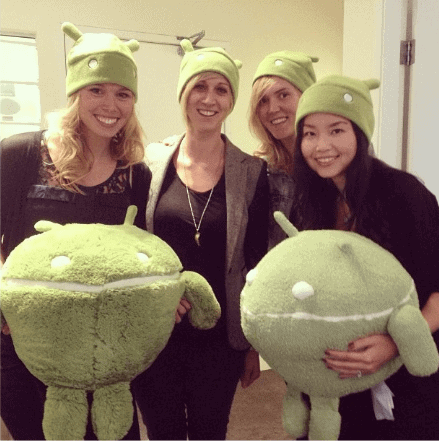
Mastering Brand Strategy with Allison Bran
Unlock the Power of Effective Brand Strategy: Insights from Allison Bran
What usually comes to mind when you think of the word “brand”? A logo? A company name? Products? While those elements are associated with brands, “brand” is actually a relationship, according to brand strategist Allison Bran. “Brand is like a third entity that exists between the business and its customers,” explains Allison. “It’s the relationship between the company and the customer.”
If you want to build a successful business, it’s crucial to create loyal customers and motivated employees who will be agents of your brand. And having a brand strategy will help!
Allison Bran is the Founder & CEO of REX Marketing + Design Inc., based in Vancouver BC. She works with companies that have typically been in business for 3-5 years, ranging from solopreneurs to large enterprises, to clarify, refresh and revitalize their brands.
Today we’ve enlisted her help to teach us about brand strategy.
In this interview with Allison, she will briefly tell us about how she got into the field of brand strategy, then she will explain:
- The differences between brand, marketing and branding
- The importance and benefits of consistently communicating your brand to both employees and customers
- The brand strategy process that Rex Marketing clients undergo
Let’s get started!
How did Allison become a Brand Strategist?
Allison: I never started out to become an entrepreneur, I just always loved the vision of the entrepreneur and wanted to support them to succeed.
I started in marketing in 1999, during the dot com boom. As a web designer, I worked with a lot of business owners from every industry such as furniture manufacturing and design, to software developers, to fashion retailers.
During that process I discovered a problem. When I was working with companies to communicate why somebody should buy from them online—when there wasn’t this in-person experience that was so magical—a lot of business owners were stumped.
Businesses were stuck wondering, “How do I get this magic across about how much I care about my customer, and the amount of love, thought and innovation I’ve put into my product? How do I let them know that through this inanimate object called a website?
So my business started out as a solution to help create meaningful connections between companies and their customers through the online sphere. And over the years, it has evolved to serve all types of companies, not just e-commerce.
By nature I’m a story-teller, I like to understand the human experience. So I help people translate their bigger strategy and their product, and turn it into a story that people would feel in their heart and their gut.
What is the difference between Brand, Marketing and Branding?
Brand = Relationship
Allison: A brand is the experience you want people to have, the impression you want on people. It isn’t a logo, name or product. It’s what people BELIEVE about your company, product, or service. It’s not what you say it is. It’s what your customers and employees BELIEVE it is.
Brand is like a third entity that exists between the business and its customers—it’s the relationship between the company and the customer.
Marketing = Mechanics
Allison: Marketing is the mechanics or the technical aspects of getting the brand message out.
Branding = Memory Hooks
Allison: Branding is memory hooks—your name, logo, design, colours, and sounds that show up consistently. We have all six senses, so even the smells associated with your brand can be part of your branding.
What is Allison’s Brand Strategy Framework and Process?
The clients
Allison: I typically work with clients who have been in business for 3-5 years. These brands have already undergone a period of what I call “guess marketing” to see if their product sells, and have proven their product-market fit. They already have a logo, branding, marketing, and strategies, but they have now come against a problem or a goal.
For example, a client might be wondering:
- Why am I not getting the leads that I want?
- Why is my brand feeling all over the place?
- How do I figure out the best touch points with my target customers?
Or they have a goal, such as:
- I really want to enter a new market.
- I’m really successful in Vancouver and I want to go to Seattle.
The client realizes that all of the strategies that got them here won't get them to where they want to go next. They either don’t know the answer to their problem, and they’ve asked a ton of marketers, gotten a bunch of answers, and feel like they're still “guess marketing”. Or they realize that they are at the limits of their understanding of brand, marketing and strategy.
Stage 1: Discovery
Allison: In the discovery stage, we do customer interviews, and market and competitor research in order to compile insights towards crafting the strategic narrative of the client’s brand.
The brand narrative is a powerful tool that has the power to inspire customers to be loyal and employees to become agents of the brand. It impacts everything from sales, culture, recruiting, operating procedures, to brand experience.
These are 5 key elements that all businesses must get clear on and communicate to the world:
- Why their business exists—the problem they want to solve for the customer. Companies often get this part wrong. Remember that it’s not about the owner’s “why”. Their “why” of the business should satisfy a deep need in the target audience. It should make their audience feel validated.
- The impact that the business wants to make on the world—their North Star.
- How the business goes about creating that impact—their secret sauce.
- What their business sells—in simple memorable terms.
- Core values that drive the company forward
Stage 2: Branding
Allison: The next stage is to examine the client’s branding. For example, we look at revitalizing and refining their visual identity, if necessary.
Stage 3: Implementation
Allison: After doing the deep work of investigating and getting clear on the client’s brand narrative, what’s the roadmap? Because we can’t do everything all at once, we prioritize. We define the first step that will make the biggest difference in their business over the next 3-6-12 months. Then we assess the results and come up with the next plan.
What is the importance and benefit of consistently communicating the brand to both employees and customers?
Allison: Brands create fans. With a well-crafted distinct brand narrative—one that clearly resonates with your audience and employees—you will save money in the long-run from less reliance on ads. Your customers will spread the word for you. And your employees will be motivated to create the brand experience for the people they serve.
Unless you want to keep working 20 hour days and be there at the till micro-managing, you need a brand strategy. Don’t forget that as business owners we have the responsibility to train people. It’s easy to dismiss and say, “The employee just doesn’t get it, it’s obvious what the customer needs, why can’t I find good people to work in my business?” The first thing we must do is market the brand to our employees.
Allison’s final thoughts
Allison: I believe in businesses being engines of change for our societies and our communities. I have worked with fashion apparel business owners, and have seen first hand how their willingness to think outside the box can shape the world. So if you’re creative, don’t let the world diminish your idea, and never lose sight of how important creatives are in making an impact.
_________________________________
Thank you Allison for teaching us about brand strategy today and encouraging apparel business entrepreneurs to think deeply about the story and vision they want to share with the world.
_______________________________
What’s next?
Now it’s time to reflect on your brand! What’s your brand’s “why”? Is it clear, and does it resonate with your staff and your target customers? If you’re not sure, then perhaps it’s time to do some investigating. Gather your team together to collect feedback, and reach out to your customers to understand what they believe about your business.
As Allison explained, brand strategy requires deep work, but it’s worth it if you want to create fans of your brand through fostering a meaningful relationship between your business and your audience.
If you’d like to hear more about brand strategy from Allison Bran, check out the full interview on IG Live.

